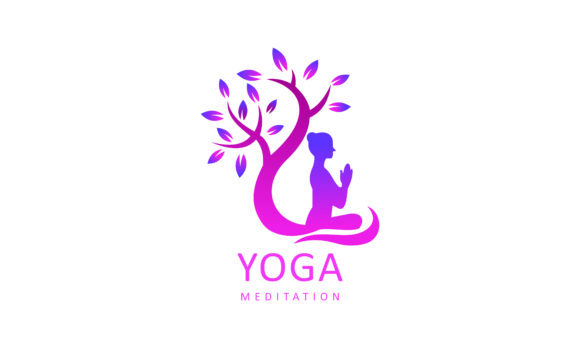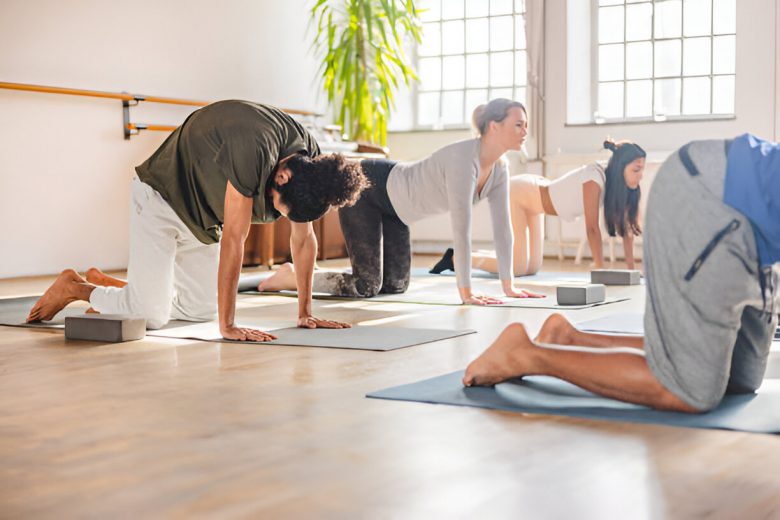Cervical spine and neck pain are increasingly common issues in today’s world, especially due to long hours spent working at desks, staring at screens, and poor posture. These discomforts can lead to stiffness, reduced mobility, and in some cases, chronic pain. Fortunately, yoga offers a natural and effective way to relieve tension, strengthen the neck and upper spine, and improve posture, which can help in reducing and preventing neck pain.
In this article, we’ll explore some of the best yoga poses to address cervical spine issues and neck pain, focusing on gentle stretching, strengthening, and postural correction. Incorporating these poses into your daily routine can help alleviate discomfort and promote long-term spinal health.
Causes of Cervical Spine and Neck Pain
Before diving into the poses, it’s important to understand some of the key causes of neck and cervical spine pain. These include:
- Poor posture: Sitting hunched over desks or screens can lead to muscle imbalances.
- Stress and tension: Emotional stress can cause tightness in the neck and shoulders.
- Lack of movement: Long periods of immobility can result in stiffness.
- Injuries: Whiplash, accidents, or overuse can lead to chronic pain.
By addressing these issues through yoga, you can promote both mobility and strength in the cervical spine and neck region, creating a balance that prevents discomfort.
Best Yoga Poses for Cervical Spine and Neck Pain Relief
1. Cat-Cow Pose (Marjaryasana-Bitilasana)
Cat-Cow is a gentle, flowing sequence that helps to mobilize the spine and release tension from the neck and upper back. This pose is highly beneficial for improving posture and increasing flexibility in the entire spine, including the cervical region.
How to Perform:
- Start on your hands and knees in a tabletop position, with your wrists aligned under your shoulders and your knees under your hips.
- As you inhale, drop your belly toward the mat, lift your chest, and gaze upward, allowing your neck to stretch (Cow Pose).
- As you exhale, round your spine, tuck your chin to your chest, and arch your back toward the ceiling (Cat Pose).
- Move fluidly between these two positions for 8-10 breaths, focusing on the movement of your spine and neck.
Benefits:
- Increases mobility in the cervical spine.
- Relieves tension in the neck and upper back.
- Improves spinal alignment.
2. Child’s Pose (Balasana)
Child’s Pose is a restorative yoga posture that gently stretches the spine, neck, and shoulders. It’s a great pose to relax and decompress the cervical spine, promoting lengthening of the neck muscles and relieving tension.
How to Perform:
- Begin on your hands and knees in a tabletop position.
- Slowly lower your hips back toward your heels as you stretch your arms forward, resting your forehead on the mat.
- You can keep your arms extended in front of you or bring them back by your sides.
- Breathe deeply and allow your body to fully relax in this pose for 5-10 breaths.
Benefits:
- Stretches the spine and neck.
- Calms the nervous system, relieving stress-related tension.
- Promotes a gentle stretch for the cervical spine.
3. Thread the Needle (Parsva Balasana)
Thread the Needle is a gentle twist that releases tension in the shoulders, upper back, and neck. It also helps to improve spinal mobility while gently stretching the cervical spine.
How to Perform:
- Begin in a tabletop position on your hands and knees.
- Slide your right arm under your left arm, bringing your right shoulder and cheek down to the mat.
- Keep your left hand pressing into the mat to support the twist, or extend your left arm forward for a deeper stretch.
- Hold the pose for 5-8 breaths and then switch sides.
Benefits:
- Relieves tightness in the neck and upper back.
- Gently stretches the cervical spine.
- Increases spinal mobility and flexibility.
4. Supported Fish Pose (Matsyasana Variation)
Supported Fish Pose is an excellent heart-opening posture that helps counteract the forward head posture commonly seen in those with neck and cervical spine pain. It uses a bolster or block to gently open the chest and stretch the neck and upper back.
How to Perform:
- Place a block or bolster underneath your upper back, allowing your head to relax back toward the mat.
- Let your arms rest beside your body with palms facing up, or extend them overhead for a deeper stretch.
- Stay in this pose for 5-10 breaths, allowing your chest to open and your neck to gently release.
Benefits:
- Gently stretches the neck and chest.
- Corrects poor posture and relieves forward head syndrome.
- Opens the chest and promotes deeper breathing, reducing tension in the upper body.
5. Seated Neck Stretch
This is a simple, yet effective stretch to target tight neck muscles, especially the sternocleidomastoid and trapezius muscles, which often contribute to neck pain.
How to Perform:
- Sit in a comfortable cross-legged position or on a chair with your spine straight.
- Gently drop your right ear toward your right shoulder, stretching the left side of your neck.
- Hold for 5 breaths, then use your right hand to gently press your head back to center.
- Repeat on the other side.
Benefits:
- Directly stretches the muscles that cause neck pain.
- Increases flexibility in the cervical spine.
- Releases tension from stress and poor posture.
6. Cobra Pose (Bhujangasana)
Cobra Pose strengthens the back muscles while stretching the front of the body, including the neck. This helps improve posture and alleviate neck pain caused by slouching and forward head posture.
How to Perform:
- Lie on your stomach with your legs extended and the tops of your feet on the mat.
- Place your hands under your shoulders and press into your palms as you lift your chest off the mat.
- Keep your elbows close to your sides and gaze slightly forward, keeping your neck long.
- Hold for 5-8 breaths, then gently release.
Benefits:
- Strengthens the muscles that support the cervical spine.
- Improves posture and reduces slouching.
- Stretches the neck and shoulders.
7. Ear-to-Shoulder Stretch with Arm Extension
This dynamic stretch helps to release tension in the sides of the neck and upper shoulders. By adding the arm extension, you also target the trapezius and upper back muscles.
How to Perform:
- Sit in a comfortable position with your spine straight.
- Drop your right ear toward your right shoulder.
- Extend your left arm out to the side, and reach your fingertips toward the floor for a deeper stretch.
- Hold for 5 breaths, then switch sides.
Benefits:
- Targets tight neck and shoulder muscles.
- Enhances flexibility and range of motion in the cervical spine.
- Relieves stress-related tension.
Additional Tips for Relieving Cervical Spine and Neck Pain
While practicing these yoga poses regularly can significantly reduce neck pain, it’s also important to adopt healthy habits that support your cervical spine:
- Improve your posture: Sit and stand with a straight spine, avoiding slouching.
- Take frequent breaks: If you work at a desk, take breaks every 30 minutes to stretch and move around.
- Use ergonomic setups: Ensure your desk, chair, and computer are set up at the proper height to avoid straining your neck.
- Practice mindfulness: Stress is a major contributor to neck pain. Incorporate mindfulness and relaxation techniques into your routine to release tension in your body.
Conclusion
By incorporating these yoga poses into your daily routine, you can help alleviate cervical spine and neck pain while improving your overall posture and spinal health. These gentle stretches and strengthening exercises target the muscles that contribute to neck pain, allowing you to find relief and prevent future discomfort.

